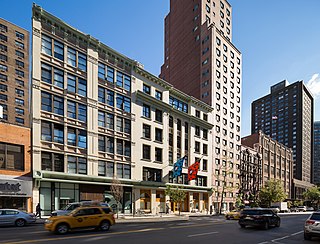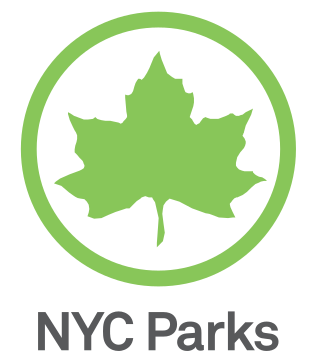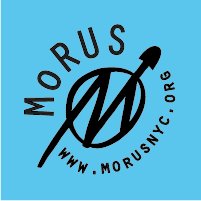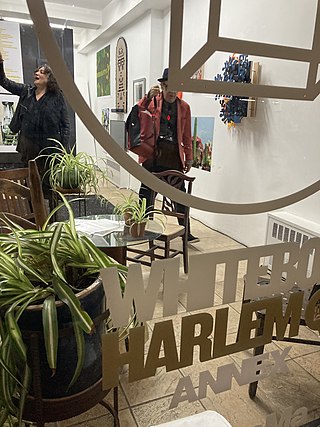
Battery Park City is a mainly residential 92-acre (37 ha) planned community and neighborhood on the west side of the southern tip of the island of Manhattan in New York City. It is bounded by the Hudson River on the west, the Hudson River shoreline on the north and south, and the West Side Highway on the east. The neighborhood is named for the Battery, formerly known as Battery Park, located directly to the south.

The School of Visual Arts New York City is a private for-profit art school in New York City. It was founded in 1947 and is a member of the Association of Independent Colleges of Art and Design.

The New York City Department of Parks and Recreation, also called the Parks Department or NYC Parks, is the department of the government of New York City responsible for maintaining the city's parks system, preserving and maintaining the ecological diversity of the city's natural areas, and furnishing recreational opportunities for city's residents and visitors.
MIX NYC is a not-for-profit organization based in New York City and dedicated to queer experimental film. It is also known as the "MIX festival," for its most visible program, the annual New York Lesbian and Gay Experimental Film Festival (NYLGEFF), which has featured early works by filmmakers such as Christine Vachon, Todd Haynes, Isaac Julien, Thomas Allen Harris, Barbara Hammer, Jonathan Caouette, Jennie Livingston, and Matthew Mishory.
Dixon Place is a theater organization in New York City dedicated to the development of works-in-progress from a broad range of performers and artists. It exists to serve the creative needs of artists—emerging, mid-career and established—who are creating new work in theater, dance, music, literature, puppetry, performance, variety and visual arts.

Mary Mattingly is an American visual artist living and working in New York City. She was born in Rockville, Connecticut in 1978. She has studied at Parsons School of Design in New York, and received her Bachelor of Fine Arts (BFA) from Pacific Northwest College of Art in Portland, Oregon in 2002. She is the recipient of a Yale University School of Art Fellowship, and was a resident at Eyebeam Art and Technology Center from 2011 to 2012.

The Leslie-Lohman Museum of Art (LLMA), formerly the Leslie-Lohman Museum of Gay and Lesbian Art, is a visual art museum in SoHo, Lower Manhattan, New York City. It mainly collects, preserves and exhibits visual arts created by LGBTQ artists or art about LGBTQ+ themes, issues, and people. The museum, operated by the Leslie-Lohman Gay Art Foundation, offers exhibitions year-round in numerous locations and owns more than 22,000 objects, including, paintings, drawings, photography, prints and sculpture. It has been recognized as one of the oldest arts groups engaged in the collection and preservation of gay art. The foundation was awarded Museum status by the New York State Board of Regents in 2011 and was formally accredited as a museum in 2016. The museum is a member of the American Alliance of Museums and operates pursuant to their guidelines. As of 2019, the LLMA was the only museum in the world dedicated to artwork documenting the LGBTQ experience.

Tramway is a contemporary visual and performing arts venue located in the Scottish city of Glasgow. Based in a former tram depot in the Pollokshields area of the South Side, it consists of two performance spaces and two galleries, as well as offering facilities for community and artistic projects. The Hidden Gardens is situated behind Tramway. The new extension to Tramway is the home of the Scottish Ballet, and is claimed to be one of the leading venues of its type in Europe.
Day Without Art (DWA) is an annual event where art institutions and other organizations organize programs to raise awareness of AIDS, remember people who have died, and inspire positive action. Initiated in 1988 by VisualAIDS from New York City (NYC), nowadays a global event.

La Plaza Cultural de Armando Perez is a community garden and public green space in the East Village neighborhood of Manhattan, New York City. Serving as a community garden, park, playground, wildlife refuge, urban farm, community composting site, and performance venue, La Plaza Cultural is also utilized by local day-care centers, after-school programs and a growing number of parents with small children. The garden has been known to grow a number of various edible plants including fruits, vegetable, and herbs. The lot is approximately 0.64 acres and consists of at least 11 members.

The Museum of Reclaimed Urban Space (MoRUS) is a not-for profit museum founded by the Times Up! Environmental Organization in 2012. It is dedicated to archiving the history of community gardens, squatting, and grassroots environmental activism of the Lower East Side neighborhood of Manhattan, New York City. Located in the storefront of C-Squat at 155 Avenue C, the museum documents how neighborhood residents transformed abandoned spaces and lots in the neighborhood into squats and gardens. By preserving the neighborhood's history, the museum aims to educate communities and individuals to keep this form of sustainable, community-based activism alive.

Time's Up! Environmental Organization was founded in 1987 to help educate New Yorkers about environmental awareness. One of its main focuses is to promote non-polluting transportation, by advocating bicycling.
Gordon Stokes Kurtti was an American artist, writer, illustrator and performer. He was a seminal figure in the early East Village art scene of New York City's Lower East Side.

Open Road Park is a small park in East Village, Manhattan, New York City, located east of First Avenue between 11th and 12th Streets. It is among the larger green spaces created in the East Village as a result of community organizing. The site of this park was taken over in 1993 by Open Road, a neighborhood nonprofit that developed the lot into a community garden and playground. Prior to its use as a park, the site was used for many purposes that reflect on the history of the surrounding neighborhood.

Elizabeth Street Garden is a one-acre (0.40 ha) community sculpture garden in the Nolita neighborhood of Manhattan, New York City, located on Elizabeth Street between Prince and Spring Streets. The garden is managed by the eponymous Elizabeth Street Garden (ESG), a 501(c)(3) nonprofit organization, and open to the public for general use and community events.

WhiteBox is a non-profit art space located in New York City. It hosts contemporary exhibitions, performance, video and special events including readings, lectures and panel discussions.
Community gardens in New York City are urban green spaces created and cared for by city residents who steward the often underutilized land. There are over 550 community gardens on city property, over 745 school gardens, over 100 gardens in land trusts, and over 700 gardens at public housing developments throughout New York City. The community garden movement in NYC began in the Lower East Side during the disrepair of the 1960s on vacant, unused land. These first gardens were tended without governmental permission or assistance.
Green Oasis Community Garden & Gilbert's Sculpture Garden, also known as Green Oasis Community Garden, is a 17,787 square foot community garden and sculpture garden at 372 East 8th Street, located in the East Village of Manhattan, New York City.
The Green Guerillas are a community group of horticulturalists, gardeners, botanists, and planners who work to turn abandoned or empty spaces in New York City into gardens. Formed in the 1970s, the group threw "seed grenades" into derelict lots and developed community gardens, often without going through official channels. It became especially popular after the concerted redevelopment of a dangerous, trash-filled space at the corner of Houston Street and Bowery in Manhattan. The resulting press coverage and word of mouth led the group to broaden its activities from active gardening to education, training, and support for a number of community groups working on their own gardens. The Green Guerillas have been credited with beginning the community garden movement and popularizing the idea of guerilla gardening.
Natacha Voliakovsky is an Argentine queer Performance Artist and activist based in New York who develops part of her work in the field of bio-hardcore political performance, with the use of other media such as photography, video, and installation. She works by exposing and transforming her own body to the limit, with the aim of revealing through her high-impact performance, how those oppressive norms of the dominant culture operate. Through this proposal, she seeks to the question about the established moral and works on issues related to gender identity, the free sovereignty and autonomy of the body, the identity, the self-perception.












